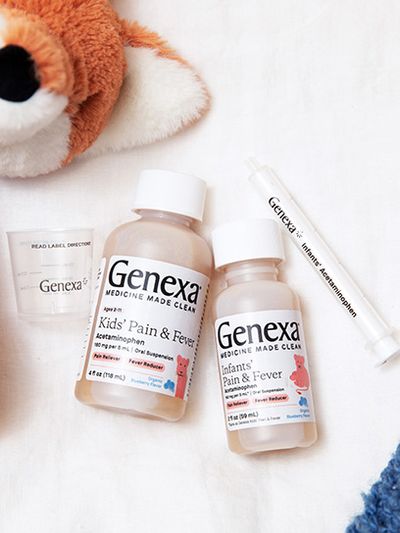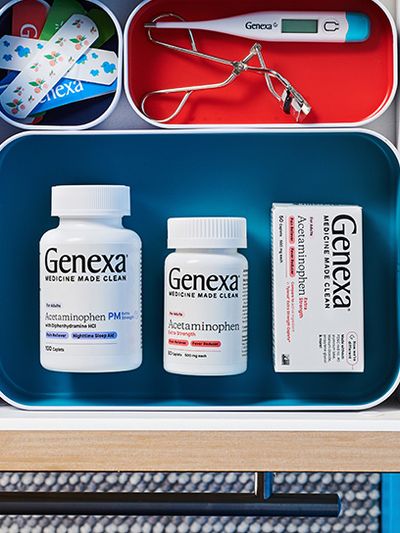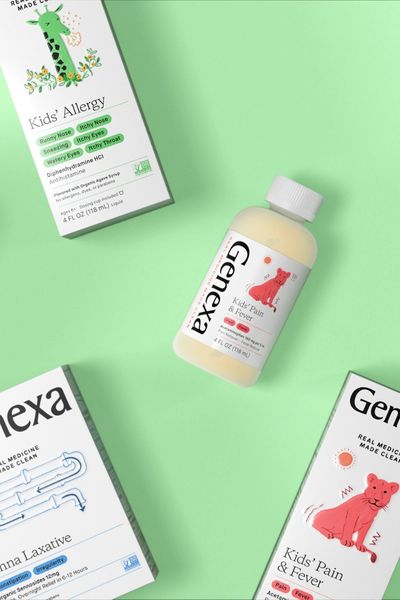How To Get Your Kids To Take Medicine
Healthy Living For Your Kids
Table of contents:
Adults and children alike may struggle to take medication, but children in particular are more likely to have difficulty taking their medicine. Whether children avoid medication as a result of an aversion to the taste, fear of choking, difficulty swallowing a pill, or another reason, getting your little one’s medication into their system can be a challenge.
Fortunately, there are many ways to encourage even the most resistant children to swallow the medication they need. If you’re wondering how to get kids to take medicine, read on for nine of our tried and true tricks.
Add Medicine to Food
One of the simplest ways to get kids to take medicine is to hide the medication in some type of food that they enjoy. However, it should be noted that while it is usually safe to go this route, some medications should not be crushed or emptied because it may change the way that time-released medications and other drugs work.
Before adding your child’s medicine to food, check with your doctor or pharmacist to confirm that this approach is safe. Some medications also need to be taken on an empty stomach, so adding them to food may impact their effectiveness.
Once you get the go-ahead from your doctor, consider placing the medication in one of the foods below. Don’t forget to make sure your child eats all of the food to ensure that they get their full dose of the medication.
Soft Foods
Soft foods are one of the best options for hiding medication because their consistency is easy to swallow for kids of all ages and powdered tablets mix in well. Popular soft foods used to hide medications include yogurt, pudding, pureed fruit, oatmeal, grits, and applesauce.
When using yogurt (a favorite food of many kids), it’s recommended that you use full fat or whole milk yogurt, as these better mask the taste of potentially bitter medications. Pudding can be used in any flavor depending on your child’s preference, but while many kids prefer chocolate or vanilla medications, these flavors do not mask the bitter taste of medications as effectively as flavors like lemon.
Pureed fruits, similar to what is fed to babies, are an easy and nutritious way to camouflage the taste of medication. Strawberries, bananas, and apricots are all easy to puree and help to mask the flavor of medication.
Cheeses
If your child loves cheese, putting their medication in a soft cheese is an excellent option. While hiding medication in hard cheeses like cheddar or parmesan would be challenging, soft cheeses like pimento cheese, cottage cheese, cream cheese, or bonne bouche cheese are a good option.
Dips
Kids love dips, so using a dip to conceal your child’s medication is a simple and effective option. Simply add crushed pills or emptied capsules to the dip as you prepare the ingredients. Any dip your child loves, whether it’s ranch dressing, cheese dip, salsa, guacamole, buffalo chicken dip, or spinach and artichoke dip, can serve as the ideal vessel to encourage your child to take their medicine.
Salads
If your child likes prepared salads, such as chicken salad, egg salad, potato salad, or tuna salad, it may be possible to dissolve their medication into the mixture. This method will not be effective for tossed salads, however.
Desserts
People of all ages having a hard time saying no to sugar, so offering a dessert as a disguise for the medication might just be your best option for encouraging your child to take their medicine. Crushed pills can be mixed easily into cream fillings and icing. Single serving treats like packaged cupcakes or desserts with filling can be cut open and the contents can be placed inside. Medication can also easily be mixed into ice cream, frozen yogurt, custard, mousse, Nutella, or whatever your child’s favorite soft dessert is.
Start Teaching Kids Young
Regardless of what strategy you use to convince your child to take their medication, an important component is teaching them how to swallow pills when they are young, before they have the chance to develop a fear of them. Children are often afraid of choking on them, but this fear typically evolves around the age of seven.
If you can teach your child how to swallow a pill when they are four or five, before they have a chance to develop a fear, then they will likely be more successful at swallowing pills throughout their lives. If your child seems fearful, remind them that they are able to swallow much larger things, like pieces of food, without choking.
Skip the Tongue
The bulk of your child’s taste buds are on their tongue, so they are more likely to reject medication that touches their tongue.
When giving your child a liquid medication, try using a dropper or syringe to place the medication all the way at the back of their throat or on the side of the tongue. If you’re concerned about your child accidentally spitting the medication back at you, try stroking them under the chin or blowing gently in their face to get them to swallow.
It should be noted that it’s important to make sure your child is fully supported and upright while using this method in order to avoid creating a choking hazard.
Offer a Reward
If your child is old enough to understand the concept of rewards and incentives, try offering them a visual award, such as a sticker, each time they take their medication successfully.
The stickers can be placed on a chart or calendar, and when your child earns a certain number of stickers, you can give them the option of redeeming their stickers for a prize of their choice, such as a toy they’ve been asking for, a trip to go get ice cream, or the chance to watch a favorite movie. This method works particularly well for school-aged children but is less successful with younger children.
Explain the Benefits
Older children may benefit from hearing an explanation about why taking their medication is important. For example, a child who is sick and unable to go outside to play may be able to understand that taking their medicine will help them to feel better so that they are able to go outside and play with their friends. The effectiveness of this method often depends on the age of the child but may be effective for school-age children.
Gauge Your Own Reaction
As a parent, your attitude and mood around your child plays a major role in influencing their behavior, so it’s important to monitor your own reaction to giving your child medication.
If you feel badly about giving the child medicine, show uncertainty by apologizing, or make comments about the bad taste of the medication, your child is more likely to have uncertainty about taking it. Try to be as cheerful as possible and encourage your child to take medication as if it is no big deal and just a part of life, regardless of your personal feelings.
Offer Some Element of Control
One way to encourage your child to take their medication is to offer them some type of control over the process.
For example, if the medication is available in a number of different flavors, give your child the choice of which flavor they prefer. Liquid medications may be delivered from a cup or syringe, the medication may be taken in the kitchen or the living room, or they can take the medication before or after they put on their pajamas.
The choice is not whether or not the child will take the medication, but rather how they take it. If your child expresses uncertainty, allow them to role play giving some medicine to a favorite toy or doll.
Try a Different Method of Delivery
It may seem counterintuitive, but sometimes a child’s issue with taking medication isn’t the medication itself but rather the way the medication is delivered. Some children may prefer to take a liquid medication out of a spoon, while others prefer to use a cup or have the medication squirted into their mouth via a syringe. This is another area in which parents can offer their child some control over how their medication is taken (see above).
No matter what, always use a method of delivery that offers precise measurements and make sure your child is supervised while taking their medication.
Lead by Example
Your child is looking up to you for guidance, so lead by example when it comes to taking medication. No matter how much you dislike taking medication, demonstrate to your child that swallowing pills or taking their medication isn’t hard to do and isn’t a big deal. The more upbeat and positive you are, the more likely your child is to see taking medication as just a part of life rather than something to be feared or avoided.
Summary
Getting kids to take medication can be a challenge, but there are lots of tips and tricks you can try to make things easier.
If given the OK by your child’s doctor, you can try hiding their medication in foods they enjoy. Other strategies include offering rewards or incentives, modeling good behavior, and teaching your child how to swallow pills before they have a chance to develop a fear of choking.






